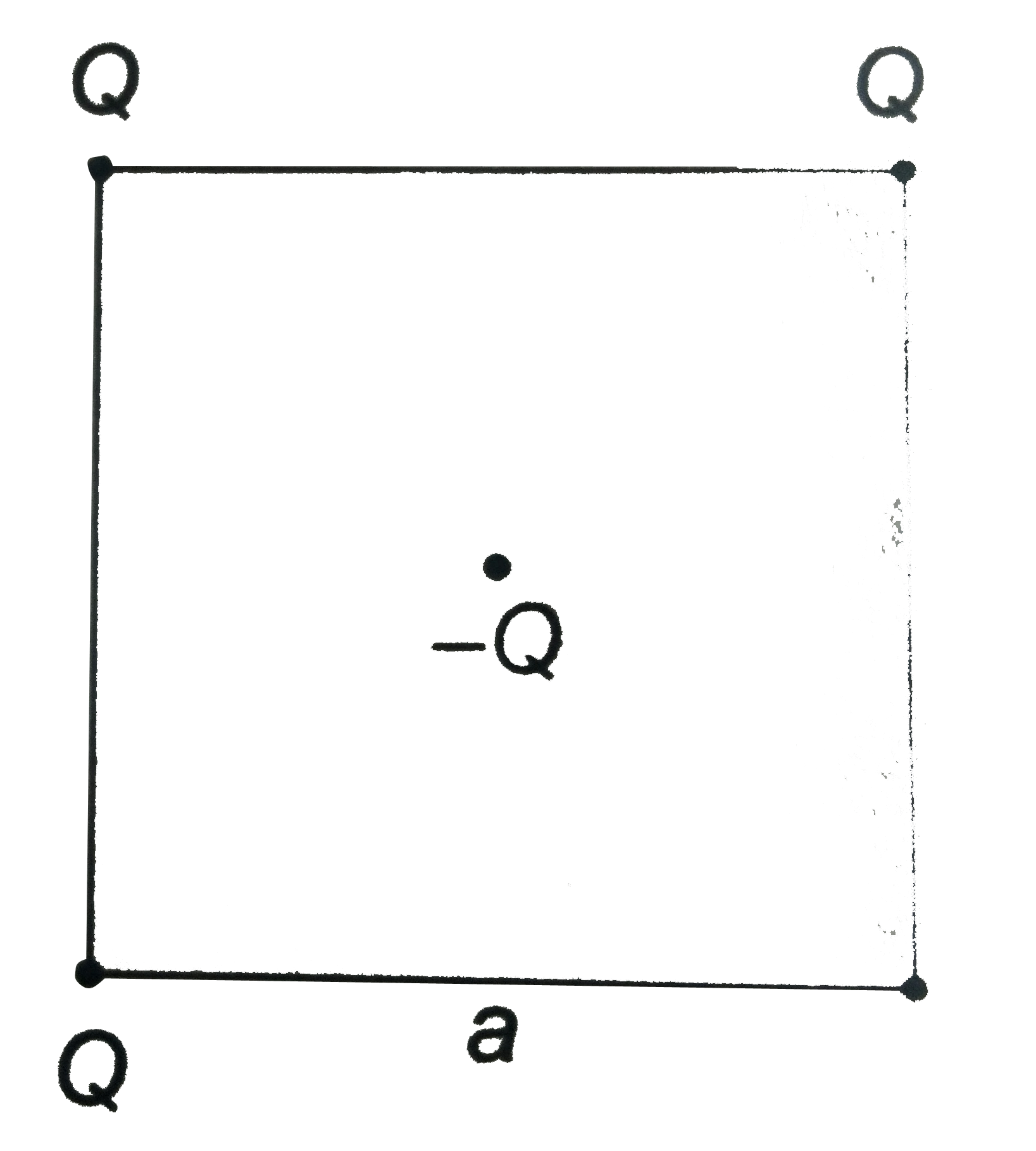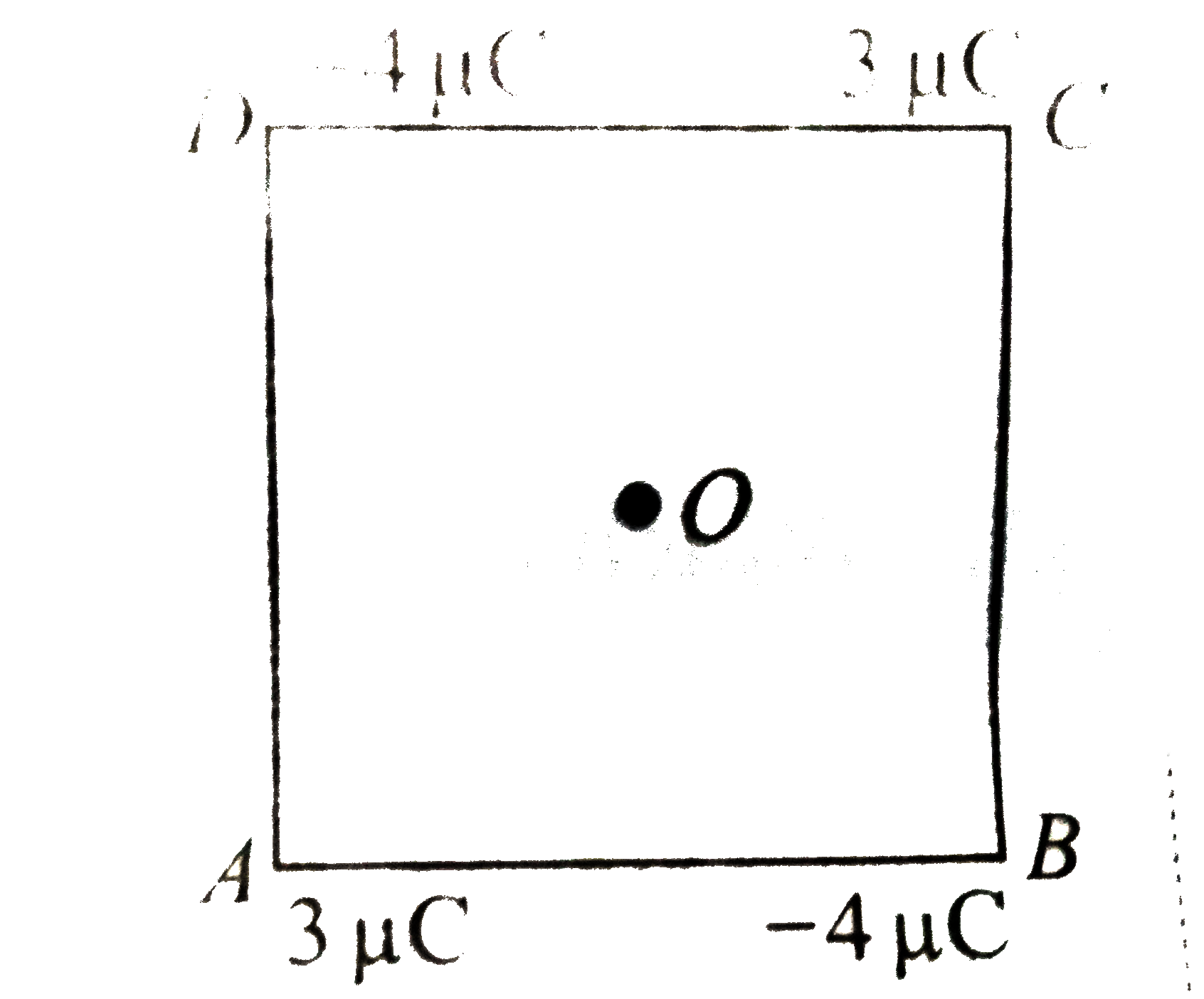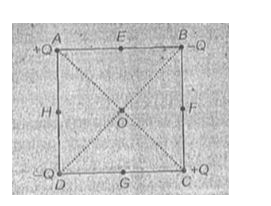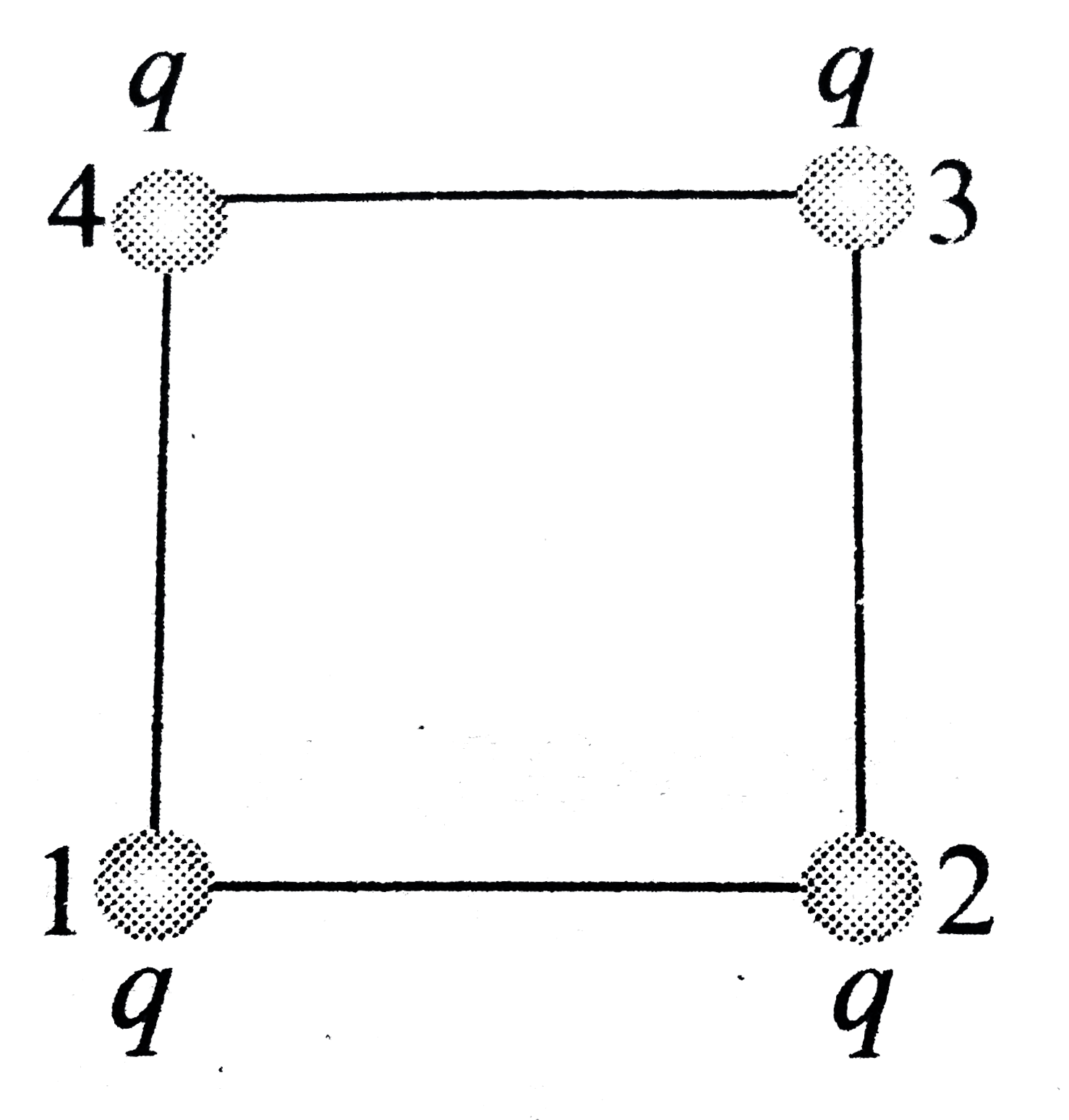Four equal charges Q are placed at the four corners of a square of each side is 'a'. Work done in removing a charge −Q from its centre to infinity is
A
0
B
√2Q24πε0a
C
√2Q2πε0a
D
Q22πε0a
Video Solution
Text Solution
The correct Answer is:2

U1=14π∈0.Q×−Qa/√2,U2=0
W1→2=U2−U1=√2Q24π∈0a
|
Topper's Solved these Questions
Similar Questions
Knowledge Check
Four equal charges Q are placed at the four corners of a square of each side is 'a'. Work done in removing a charge −Q from its centre to infinity is
AzeroB√2q2π∈0aC√2qπ∈0aDq2π∈0aThree equal charges Q are placed at the three corners of an equilateral triangle of side length a. Work done in shifting a charge q from infinity to the centroid of the triangle is
A3Qq4π∈0aB3Qq4π∈0√3aC3√3Qq4π∈0aD√3Qq4π∈03aEqual charges q are placed at the four corners A,B,C,Dof a square of length a. The magnitude of the force on the charge at B will be
A3q24πε0a2B4q24πε0a2C(1+2√22)q24πε0a2D(2+1√2)q24πε0a2
Four bodies each of mass m are placed at the different corners of a square of side a. find the work done on the system to take any one budy to infinity.
View SolutionFour point charges are placed at the corners of a square ABCD of side 10 cm, as shown in figure. The force on a charge of 1μC placed at the centre of square is

View SolutionEqual charges Q are placed at the four corners A, B, C, D of a square of length a. The magnitude of the force on the charge at B will be
View SolutionFour charges Q-Q, Q-Q are placed at the corners of a square as shown . The potential is zero at points

View SolutionEqual charges q are placed at the three corners B, C, D of a square ABCD of side 'a'. The ratio of potential at A to centre O is
View Solution

 .
.